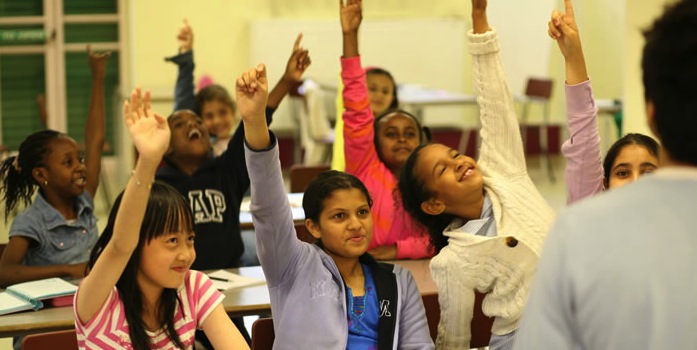What is the best learning environment and how can we create a positive learning environment in our ESL classes? What can we learn from sports about positive learning environments?
“Children learn in a variety of ways. As a coach, the type of environment you set up is crucial to how much learning takes place”, coaches say. “If I enjoy, I send a message to the group… and that gives you a real connection. We have to create an environment in which the kids feel it’s ok to make a mistake. Being a good communicator allows you to manage these mistakes to the benefit of the children.”
There’s a lot that we can take from sports and apply in the classroom regarding positive learning environment.
Some considerations for ESL positive learning environment
There are different types of learning environments but we have just chosen four to be analyzed:
1- Knowledge-centered
2- Student-centered
3- Teacher-centered
4- Assessment-centered
Characteristics of a knowledge-centered environment
- Can be teacher-centered (teacher is content resource), traditional pedagogy at times
- Students might be working individually
- Assessments are comprehensive, requiring students to bring prior learning to bear
- Students are asked to explain in their own words what they have just learned
- Materials on walls serve as review of content that has been learned
- Students are engaging in “practicing” the discipline (active learning) as if they were
- professional in that discipline
- Students are using discipline-specific terminology accurately
Characteristics of a student-centered environment
- Students’ interests, attitudes, beliefs are addressed and valued (and the teacher sets a model for the students about how they should value others’)
- Teacher tries to help students see how their interests, attitudes and beliefs can be transformed into more formal ways of thinking about the subject matter
- Students are trying to make sense of discipline-specific terminology
- Teacher is asking questions to try to tap into students’ prior knowledge
- Students have some decision-making power about what they will learn and explore, and maybe even about how they will be assessed
Characteristics of an assessment-centered environment
- Students receive feedback so they can move toward what they should achieve
- Summative assessment (formal testing) – comes at the end, is often final
- Formative assessment (can be informal, observational) – assessment that occurs along the way, feedback gives students the opportunity to respond and improve, shows progress
- Self-assessment and peer assessment
- Assessment occurs frequently, feedback is provided to students constantly
- Teacher is careful in phrasing feedback to help students advance
- Teacher helps students learn how to monitor their own thinking (metacognition)
- Breaking down procedures into small steps and then scaffolding students toward being able to do all the steps by themselves
- There may be portfolios of students’ work
Characteristics of an teacher-centered environment
- Knowledge is transmitted from professor to students
- Students passively receive information
- Emphasis is on acquisition of knowledge outside the context in which it will be used
- Professor’s role is to be primary information giver and primary evaluator
- Teaching and assessing are separate
- Assessment is used to monitor learning
- Emphasis is on right answers
- Desired learning is assessed indirectly through the use of objectively scored tests
- Focus is on a single discipline
- Culture is competitive and individualistic
- Only students are viewed as learners
DEBATE QUESTIONS:
Why creating a positive learning environment in vital for ESL classes?
What type of learning environment are they developing?
What´s the role of the teacher?
Is it possible to apply the ideas suggested from their experience into the English class? How?
What did they say about ''making mistakes''? Do you agree? Why / Why not?
